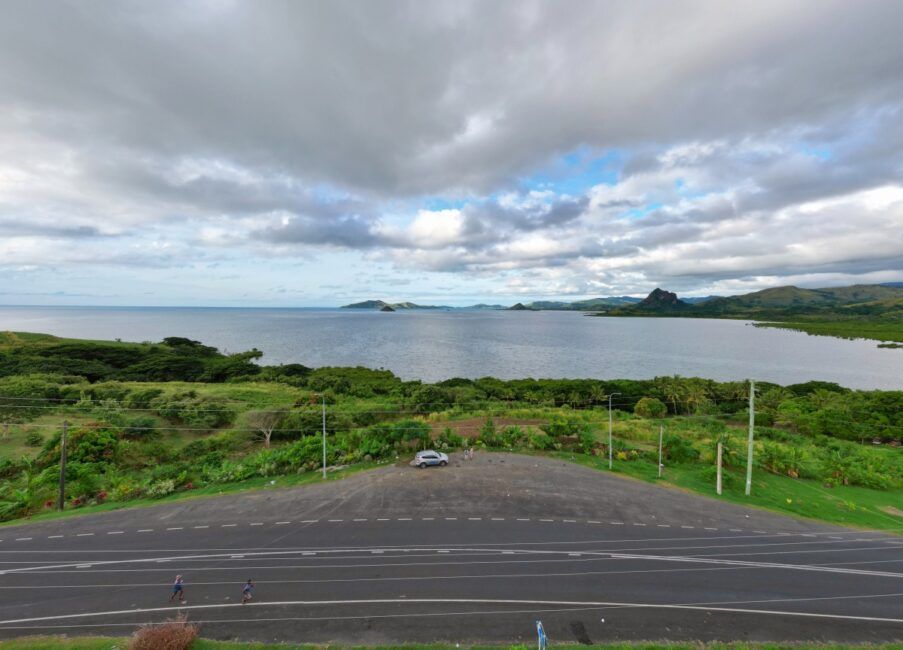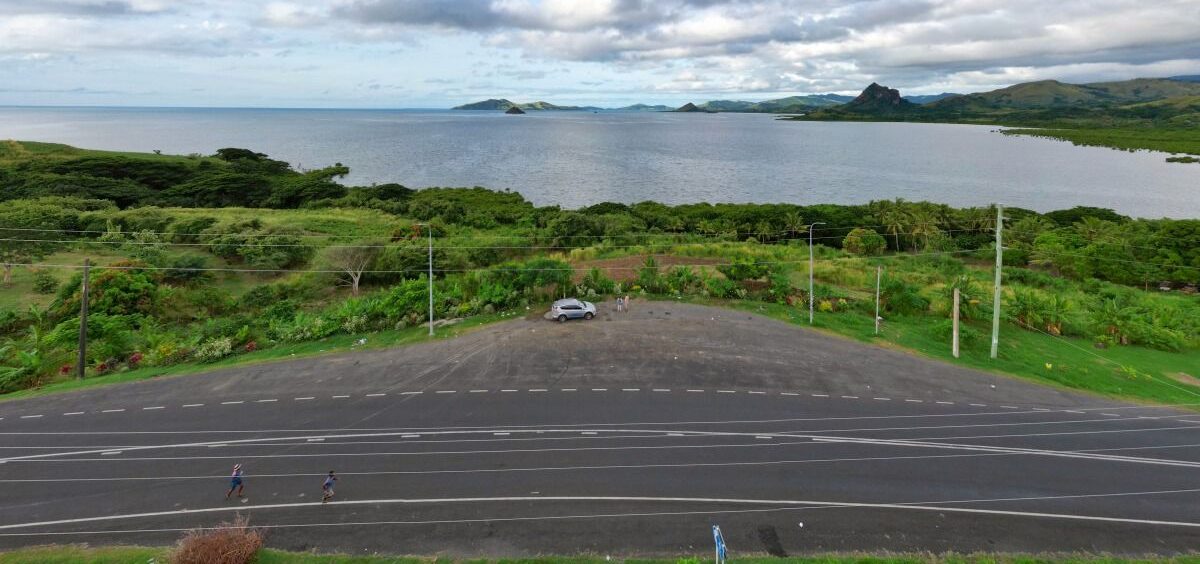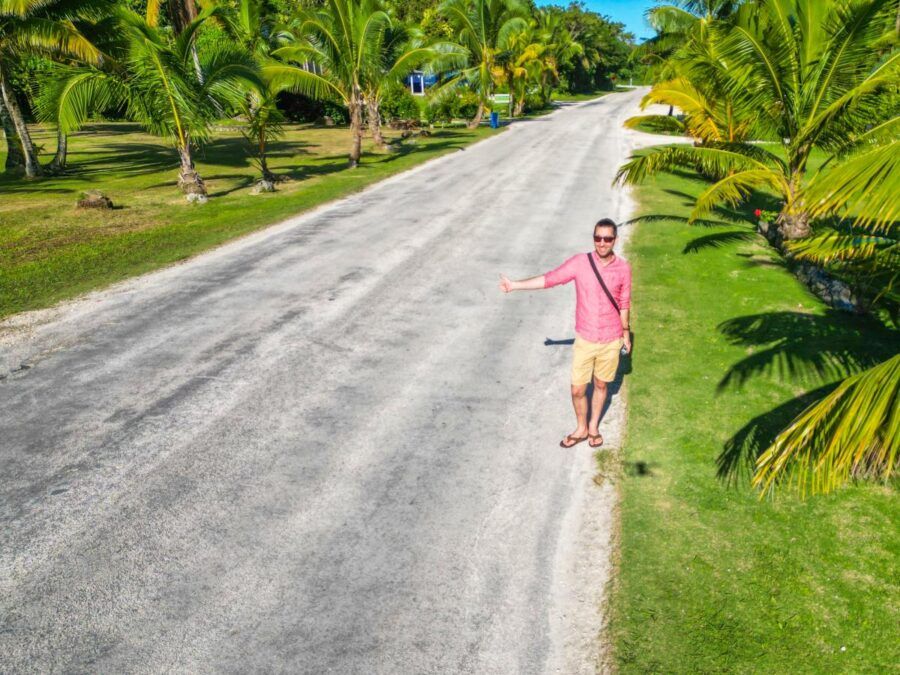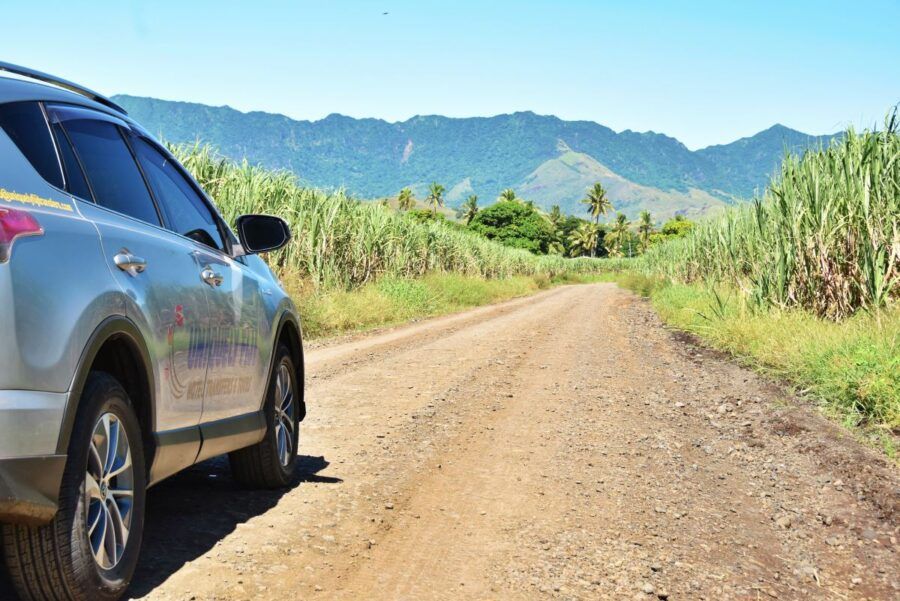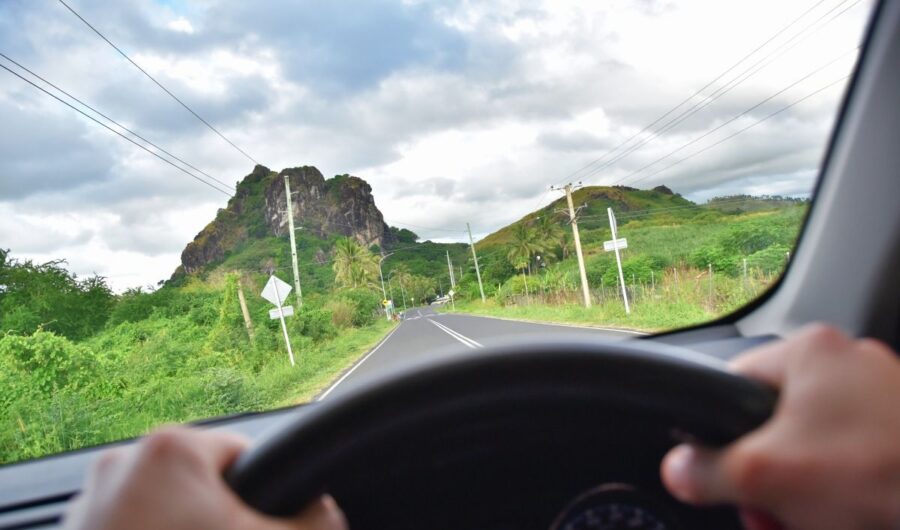The Complete Guide to Driving in Fiji
While it might seem like island-hopping is the way to go in Fiji, there’s actually a lot to discover on land! Arguably, the best way to explore Fiji’s larger islands and reach its hidden gems is by making use of one of the many Fiji car rental companies and hitting the road. However, before you put the keys in the ignition, we suggest you take a look at this guide on how to drive in Fiji, so you know what to expect and stay safe on Fiji’s roads.
Table of Contents
How Long Does it Take to Drive Around Fiji?
- Viti Levu – 500 km / 310 mi – 8-10 hrs
- Vanua Levu – 290 km / 180 mi – 4 hrs 30 mins
- Taveuni – 290 km / 180 mi – 1 hr 45 mins
Go in-depth on the driving times around the islands in our complete guide to Fiji Driving Times & Distances.
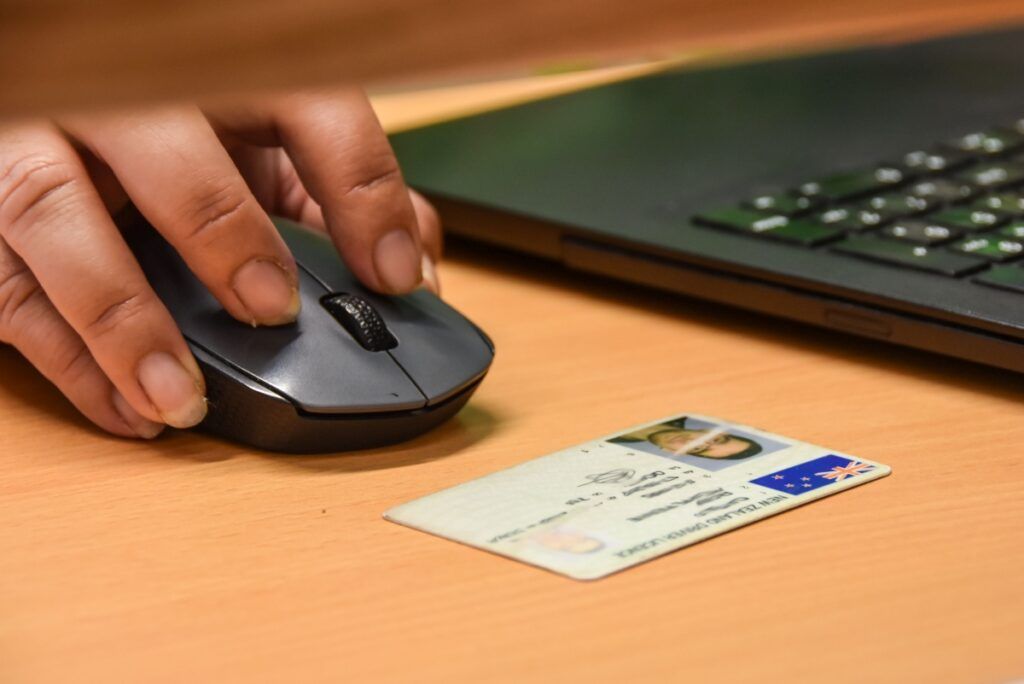 © FijiPocketGuide.com
© FijiPocketGuide.comWhat License Do You Need to Drive in Fiji?
First things first, when you want to drive in Fiji, you need to make sure you have a valid driver’s license.
Yes, it is legal to drive in Fiji if you have a full valid overseas license written in English. For licenses not in English, it’s best to have an International Driving Permit (IDP) to accompany your license.
Some car rental companies only accept drivers over 21, 23 or 25 years old with at least two or three years of driving experience.
See Can You Drive in Fiji with Your Overseas License for more information on using an IDP.
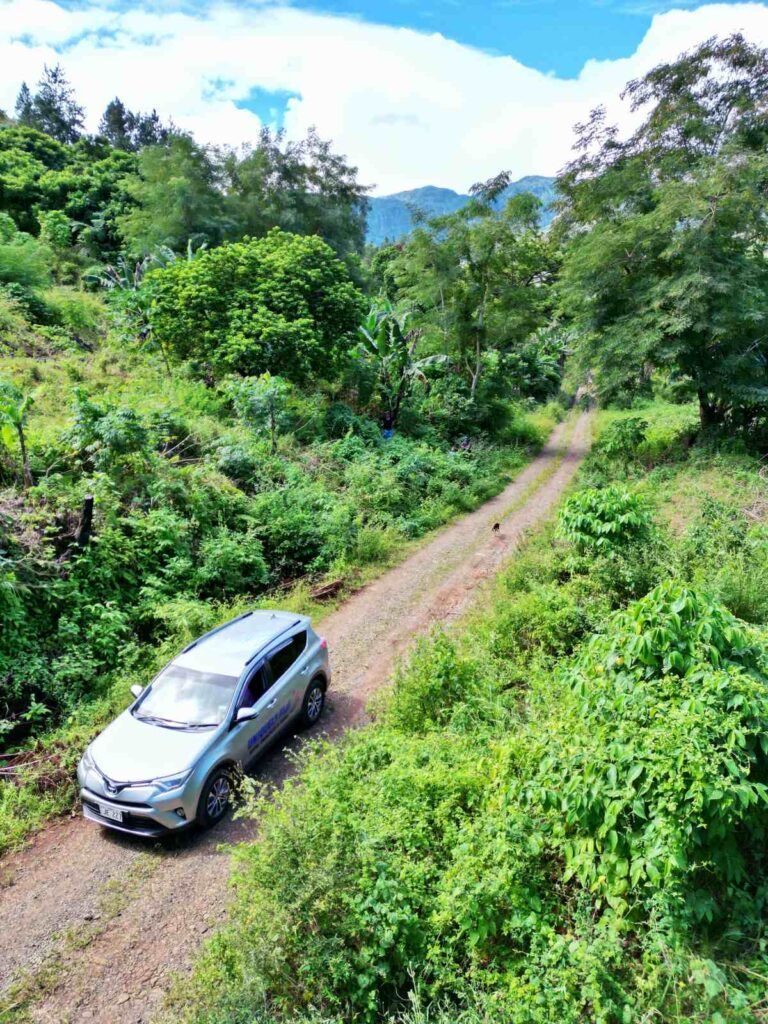 © FijiPocketGuide.com
© FijiPocketGuide.comRenting a Vehicle in Fiji
There are many car rental companies on Fiji’s main island, Viti Levu. In contrast, less than 10 companies can be found in Vanua Levu, and only three car rental companies exist in Taveuni.
Car rentals in Fiji tend to be of good quality, with a wide range of budget, premium and 4WD vehicles available. Expect all of the usual car rental paperwork to be done prior to renting your car, including paying a bond and having the option for additional insurance to reduce your basic car rental insurance’s excess. However, this may be a little more relaxed with local companies, especially on Taveuni. Get a full cost breakdown in The Cost of Renting a Car in Fiji: Full Car Rental Cost Breakdown.
A significant proportion of Fiji’s roads are sealed, so any type of vehicle is usually suitable for these roads. However, most of Fiji’s inland roads are gravel or dirt roads, so be sure to hire a 4WD or high-clearance car if you intend to go off the main roads. Note that some car rental agreements in Fiji do not allow renters to take vehicles off sealed roads.
Car Hire Companies in Fiji
Compare vehicle rental companies in the following:
- 20 Best Car Rentals in Fiji (this includes Taveuni)
- 15 Best Car Rentals in Nadi
- 10 Best Car Rentals in Suva
- 5 Best Car Rentals in Sigatoka & the Coral Coast
- 10 Best Car Rentals in Savusavu, Labasa & Vanua Levu
Scooter Hire Companies in Fiji
Scooter hire is not popular in Fiji, but if you want to find out more information, check out:
Remember that on returning your vehicle, you need to fill up the fuel tank or else you will be charged a premium for fuel – more on gas stations in the section below.
For more car rental advice, take a look at The Guide to Renting a Car in Fiji.
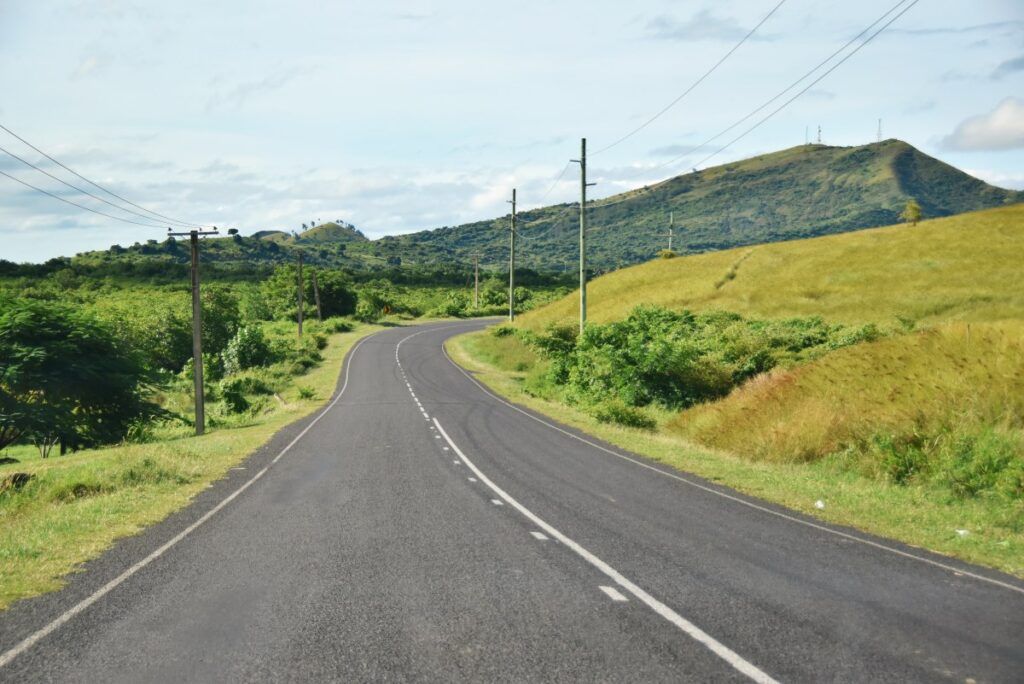 © FijiPocketGuide.com
© FijiPocketGuide.comWhat are the Roads Like in Fiji?
Fiji has around 7,500 km (4,660 mi) of roads, with only around 1,700 km (1,056 mi) of roads being sealed. The easiest roads to drive and get to know are the Queens Road, which follows the southern coast of Viti Levu between Nadi and Suva, and the Kings Road, which follows the northern coast between Nadi and Suva. Vanua Levu’s road between Savusavu and Labasa is also fully sealed, as is the first half of the Hibiscus Highway following the coast from Savusavu.
That leaves about 5,800 km (3,600 mi) of unsealed roads in Fiji. These roads are a mixed bag when it comes to their conditions. Some are gravel roads that are easy to drive on as long as you slow your speed, while others are dirt roads that are best attempted in a 4WD with some knowledge of how to handle a 4WD vehicle.
Is it Easy to Drive Around Fiji?
The main road network in Fiji isn’t too complex, with main roads circumventing the coasts and only one main road crossing the island of Vanua Levu. Roads get a little more complicated with lots of one-way roads in Suva city centre, as do some of the inland gravel roads of Viti Levu. Luckily, directional signage is relatively good in Fiji, while GPS apps tend to be pretty accurate. That’s with the exception of Taveuni, where the International Date Line that passes through the island messes up GPS routes.
Traffic can get somewhat busy in the main hubs of Fiji, such as Nadi, Lautoka, Savusavu and Labasa. Taxi drivers in Suva are especially aggressive, beeping horns at any sign of hesitation, which can be intimidating for some drivers. Be aware of the road rules (see below), take it easy, but be alert when driving anywhere in Fiji, and you should be just fine.
Fiji is not a country to speed around. Speed limits are low, and there are many hazards on the roads; children are likely to be playing on the roadside, animals may be tied up (or loose) just on the roadside, while villagers walk on the roadside from A to B with the lack of sidewalks/footpaths are all things to look out for.
For more road safety advice, see the 15 Safety Tips for Driving in Fiji.
 © FijiPocketGuide.com
© FijiPocketGuide.comGas Stations in Fiji
Fuel stations are most abundant in Fiji’s main towns, becoming sparser as you travel between villages. There are plenty of fuel stations around the Queens and Kings Roads to make it all the way around Viti Levu. If heading into the interior of Viti Levu or Vanua Levu, we recommend heading out with a full tank of fuel.
While some fuel stations in the main town accept credit card payments, you should have cash available to pay for fuel outside of the towns. If driving somewhere remote and start running out of fuel, it’s worth asking if they sell fuel at local village stores – however, this shouldn’t be relied on.
Apart from the occasional fuel station in Savusavu, fuel stations in Fiji are generally fully serviced, meaning that service station attendants refuel the vehicle for you. At larger gas stations, you will need to pay for fuel inside the shop, while attendants at more remote fuel stations accept the payment and bring back the appropriate change and receipt.
For the most recent fuel prices, check out The Cost of Renting a Car in Fiji: Full Car Rental Cost Breakdown.
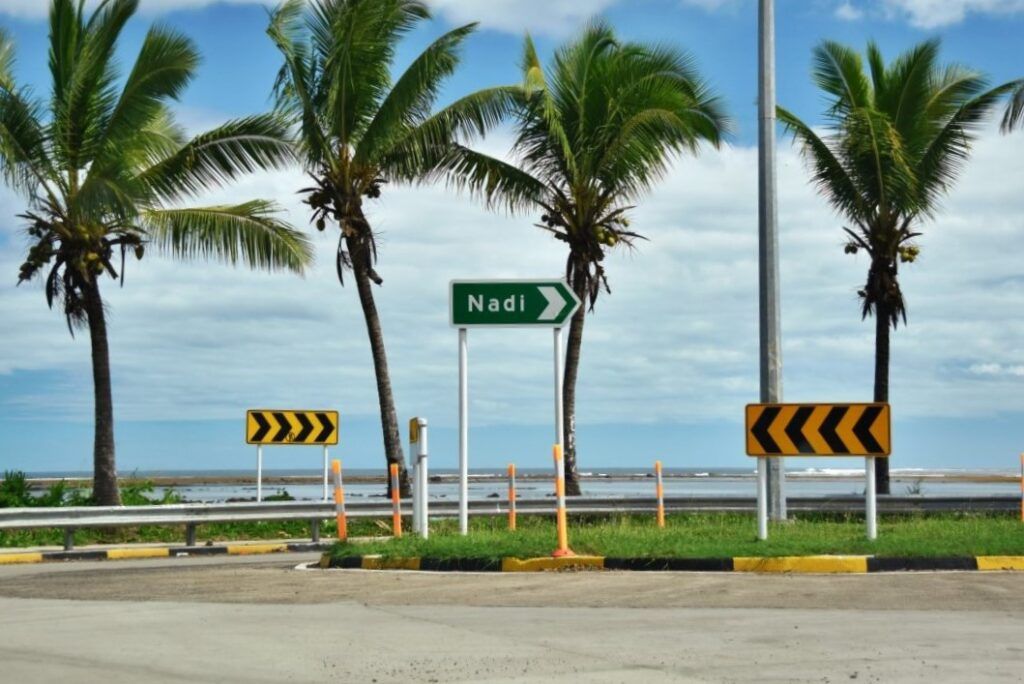 © FijiPocketGuide.com
© FijiPocketGuide.com10 Road Rules in FijiYou Need to Know
The road rules in Fiji are similar to those in countries like New Zealand and Australia. Driving in Fiji is pretty simple as long as you remember the few simple rules listed below and get familiar with the Fiji road signs.
- Drive on the left-hand side of the road
- The speed limit is 50 kph (31 mph) in urban areas
- The speed limit is 80 kph (50 mph) on the open road
- When approaching a roundabout, give way to vehicles on the right
- Seatbelts are compulsory for everyone over the age of eight in a car
- The blood alcohol level is 80 mg
- It is illegal to use your phone while driving unless you have a hands-free device
- Car owners are required to have a minimum of third-party insurance (this is included in car rentals)
- You must be at least 18 years old and have a full driving license to legally drive
- Observe all road signs.
To get familiar with the Fiji road signs, take a look at the Land Transport Authority (LTA) road sign page. For a few more safety tips, take a look at the 15 Safety Tips for Driving in Fiji.
More on How to Drive in Fiji
That’s it from the guide to driving in Fiji, including 10 essential road rules in Fiji that you need to know. For more road trip advice, check out more of our guides:
- The Driving Times in Fiji You Need to Know
- 10 Ways to Save Money on Car Rental in Fiji
- 20 Best Car Rentals in Fiji
Finally, check out more transport options around the islands in our Fiji Transport Guide: 20 Best Ways to Get Around Fiji.
Sources:
The information in this guide has been compiled from our extensive research, travel and experiences across Fiji and the South Pacific, accumulated over more than a decade of numerous visits to each destination. Additional sources for this guide include the following:
- Land Transport Authority (Road safety advice - Updated [2025])
- Tourism Fiji (General travel advice - Updated [2025])
- Fiji Immigration (Visa and immigration advice - Updated [2025])
- Fiji Revenue & Customs Service (Customs and visitor taxes - Updated [2025])
- Biosecurity Authority of Fiji (Biosecurity advice - Updated [2025])
- Fiji Meteorological Service (Weather forecast and warnings - Updated [2025])
- Fiji Bureau of Statistics (Statistics and travel data - Updated [2025])
- Ministry of Tourism and Civil Aviation (Tourism statistics - Updated [2025])
- SPTO (Pacific tourism advice - Updated [2025])
- Fiji Hotel and Tourism Association (Tourism trade association - Updated [2025])
- Safe Travel (New Zealand travel advisory for Fiji - Updated [2025])
- Smart Traveller (Australia travel advisory for Fiji - Updated [2025])
- Travel.State.Gov (U.S. travel advisory for Fiji - Updated [2025])
Our editorial standards: At Fiji Pocket Guide, we uphold strict editorial standards to ensure accurate and quality content.

About The Author
Robin (Ruveni) C.
This article was reviewed and published by Robin, the co-founder of Fiji Pocket Guide. He has lived, worked and travelled across 16 different countries before settling in the South Pacific, so he knows a thing or two about planning the perfect trip in this corner of the world. Robin is also the co-founder of several other South Pacific travel guides and is a regular host of webinars with the South Pacific Tourism Organisation.
